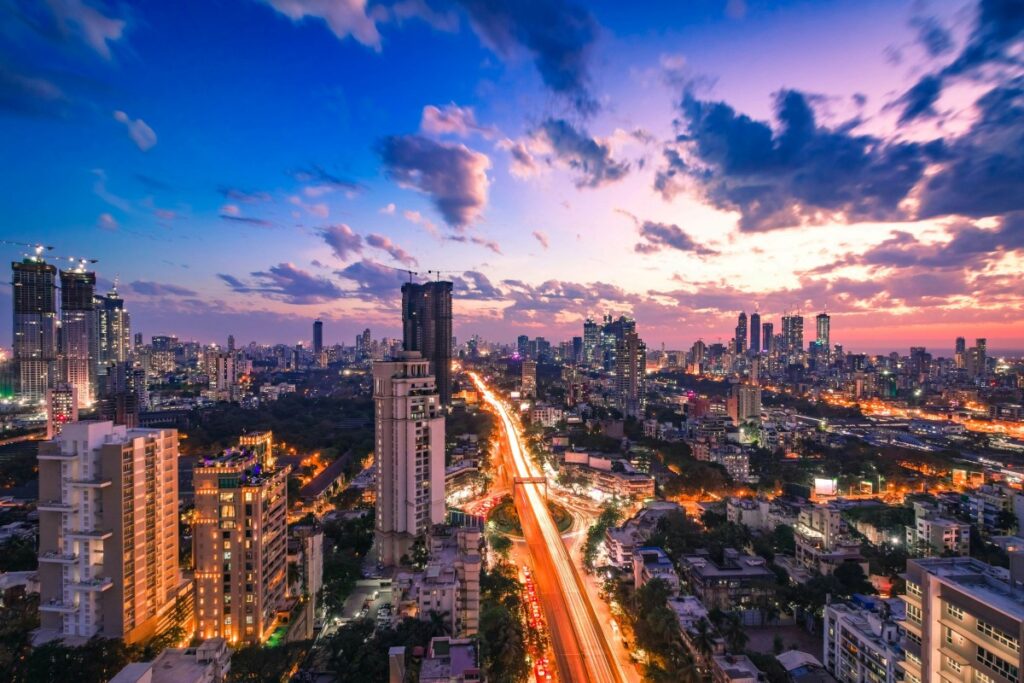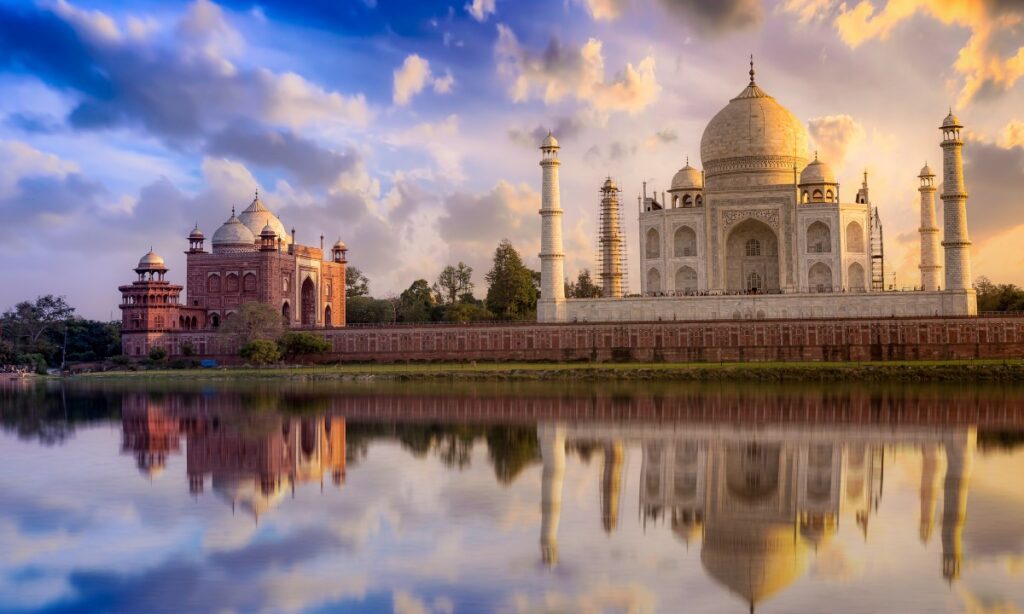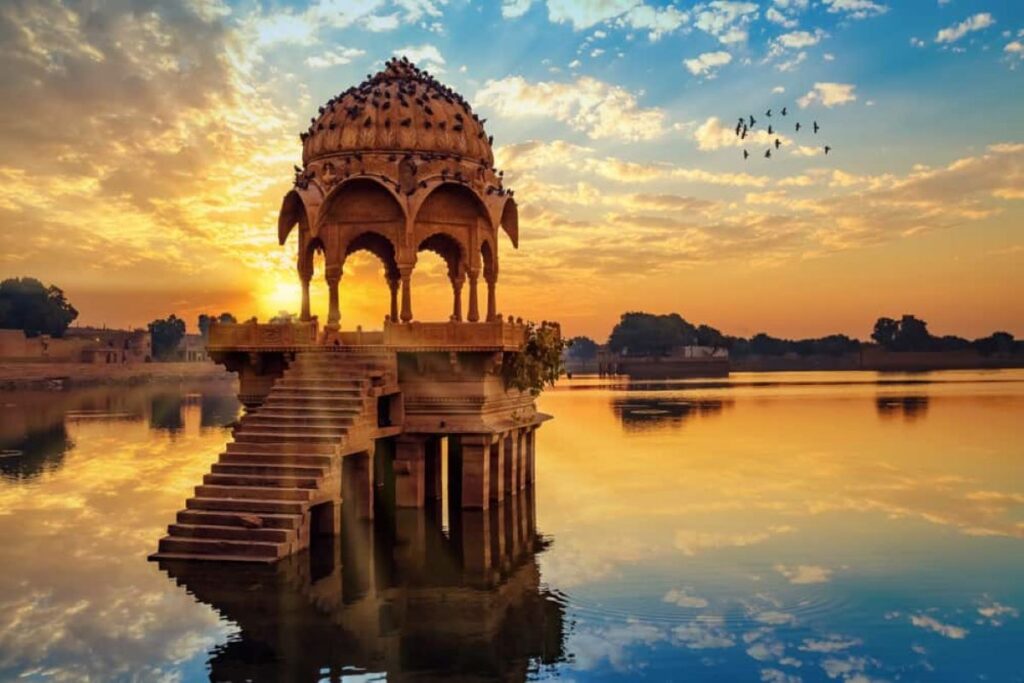Stepping into the vibrant tapestry of India is an adventure waiting to unfold, filled with diverse cultures, breathtaking landscapes, and boundless opportunities. As you prepare to embrace this kaleidoscope of experiences, let IKAN accompany you on your journey. With over 25 years of experience in managing talent mobility needs, IKAN is a trusted partner of Reloc8 Asia Pacific Group, ensuring seamless transitions for individuals and families relocating to India. From the majestic peaks of the Himalayas to the bustling streets of Mumbai, India offers a blend of tradition and modernity, waiting to be explored.
This comprehensive guide, curated in collaboration with IKAN, provides invaluable insights into life in India, tailored to meet your unique needs. Discover the richness of India’s cultural heritage, navigate its diverse cities, and immerse yourself in the warmth of its people. Whether you’re captivated by the historical charm of Jaipur, the serene beauty of Kerala, or the bustling tech hubs of Bengaluru and Hyderabad, this guide covers everything from healthcare systems to visa requirements, ensuring a smooth transition to your new life in India.
Prepare to embark on your journey to making India your new home with confidence, guided by the expertise of the IKAN team. For more information, visit their website at https://www.ikan.com/.
SECTION 1: UNDERSTANDING THE BASICS

What It’s Like to Live in India
Living in India is a diverse and dynamic experience. Known for our hospitality, we have a phrase “मेहमान भगवान होता है” (Mehmaan Bhagwaan Hota Hai)” which is a common saying in Hindi, translating to “Guests are like gods” in English. This phrase encapsulates the cultural value placed on hospitality and the treatment of guests in Indian society.
Our constitution accords “official status” to around 32 languages; beyond these, hundreds of other languages and dialects are spoken by various ethnic and cultural groups. This diversity is also reflected in the food we eat, with each region offering its own culinary specialties, flavors, and cooking techniques. From spicy curries in the south to aromatic biryanis in the north, and from seafood delicacies on the coast to vegetarian dishes in the heartland, Indian cuisine reflects the diversity of cultures and ingredients found across the country.
India is the birthplace of major religions such as Hinduism, Buddhism, Jainism, and Sikhism. Additionally, it is home to significant populations of Muslims, Christians, Jews, and others. This religious diversity contributes to a vibrant tapestry of festivals, temples, mosques, churches, gurdwaras, and other places of worship across the country. India has a collectivistic culture; this shows in our family structures, as many Indians live in joint families. When we order food, we order for the table and not for one individual. Our festivals and rituals call for community participation, and there is a lot of emphasis on “familial duty” and respect for hierarchy.
However, there are challenges as well; weather conditions in certain regions can be extreme, and infrastructure can pose a challenge; pollution, congestion, inadequate public transportation, and uneven access to basic resources and services are major issues.
Cultural Differences
- Social Hierarchy: India has a hierarchical society, with respect for elders, authority figures, and social status being important cultural norms. Foreigners should be mindful of addressing people with appropriate titles and showing deference to elders and those in positions of authority.
- Time as fluid: Indians may have a more relaxed attitude towards time and punctuality compared to Western cultures. It’s not uncommon for meetings and events to start late, so foreigners should be prepared for some flexibility in scheduling.
- Chaos and Traffic: Navigating along India’s bustling roads, one encounters a vibrant chaos marked by the continuous blare of honking horns, the absence of lane discipline, and occasional interruptions from stray cows leisurely sauntering across the roads. Episodes of road rage are also not uncommon, manifesting as verbal abuse, gestures, and even physical confrontations between motorists.
- Income Inequality and domestic help: In India, the stark realities of income inequality are often glaringly evident, presenting a stark contrast between affluence and poverty. It’s not uncommon for expats to be taken aback by the availability and prevalence of domestic help, which reflects this divide. For expats, witnessing the reliance on household staff and the disparity in living standards between different socioeconomic classes can be a jarring experience, challenging their preconceptions about labor dynamics and income distribution. It prompts a deeper reflection on the complex issues of wealth disparity and social justice in India.
- Personal boundaries and crowds: The nature of overcrowding in India can be a profound shock to expats accustomed to more spacious and orderly environments. Coming from countries where personal space and organized infrastructure are the norm, the sheer intensity of crowds and the chaos they create can be disorienting. Queuing remains a fluid concept in India, in many settings you will simply find individuals jostling for a position in the crowd. The constant sensory overload of noise, congestion, and the lack of clear boundaries can be overwhelming; the sheer density of people can turn even the simplest tasks into arduous undertakings.
- Red tape and bureaucratic hurdles: The pervasive red tape and bureaucratic hurdles in India often come as a shock to expats accustomed to more streamlined processes in their home countries. From obtaining permits and licenses to navigating through government offices, the layers of paperwork and the slow pace of administrative procedures can be frustrating and time-consuming. Expats may find themselves mired in a labyrinth of regulations and paperwork, encountering delays and inefficiencies that hinder their ability to accomplish even simple tasks.
- Heat and Climate: The intense heat and humidity experienced in many parts of India, especially during certain seasons, can be physically challenging for expats coming from cooler climates. Delhi experiences scorching temperatures during the summer months, typically from April to June. The mercury often soars well above 40 degrees Celsius (104 degrees Fahrenheit), with occasional spikes reaching even higher temperatures. The dry heat characteristic of Delhi exacerbates the discomfort, with hot winds adding to the oppressive conditions. In contrast, Mumbai’s climate is characterized by high levels of humidity, especially during the summer season, which extends from March to June. The humidity levels in Mumbai often hover around 70-80% or even higher, creating a sticky and muggy atmosphere.
Languages
Each region has its own language; states in India are divided based on linguistic considerations. While one may get away with speaking “Hindi” or “English” in most Tier 1 cities, the use of the aforementioned languages, the local language, will be preferred. Here are the major cities in India and the primary languages spoken by them:
- Maharashtra (Mumbai & Pune) speaks Marathi
- Karnataka (Bengaluru) speaks Kannada
- Tamil Nadu (Chennai) speaks Tamil
- Telangana (Hyderabad) speaks Telugu
- West Bengal (Kolkata) speaks Bengali
- New Delhi speaks Hindi
Economy and Job Market
India is a developing economy. At present, India is very open to foreign investment, and India’s ranking in the World Bank Group’s ease of doing business index jumped from 142 to 63 in just seven years, in 2023.
Please find an article by The Economic Times highlighting the recent growth trends for 2023-2024:
Please find this article by The Economic Times describing the hiring activity in India in 2024:
Additionally, please find this article by The Economic Times describing the hiring outlook in India for April-June 2024:
SECTION 2: COST OF LIVING AND LIFESTYLE

Cost of Living
India is considered an expensive country to live in when compared to its per capita income and per capita consumption standards. Some may even say that “India is a rich country inhabited by the poor.”
Real estate prices, cost of land, and housing rents are high. Mumbai is one of the most expensive cities in the world, and New Delhi, Gurgaon, and Bengaluru are right up there in the cost of living index.
Lifestyle
There are four classes of people: the super-rich, which may form about 0.1% of the total population; the rich, comprising about 0.5% of the population; the higher middle class, comprising 1% of the population; the middle class, comprising 5% of the population; and the lower middle class, comprising 10% of the population. Additionally, there are the lower income group’s families – those who earn less than 500 USD per month, constituting a staggering 85% of the population. One can hence infer the average lifestyle.
Healthcare Services
Private healthcare is affordable and accessible for expats in India. The private sector consists of 58% of the hospitals in the country, 29% of beds in hospitals, and 81% of doctors. Many estimates have found that the costs in India for quality healthcare are 1/10th of the costs in the UK and USA, and medical tourism is a big growing sector in India. The strength of India lies in the skills of our doctors, support staff, the caliber of our nurses, and the state-of-the-art infrastructure available in our private hospitals.
Educational System
Tier 1 cities such as Delhi, Bengaluru, Mumbai, Hyderabad, Chennai, etc., have international schools that offer international curriculums such as IB and IGCSE. These schools have exceptional infrastructure and a host of extracurricular activities. The pupil-to-teacher ratio is generally around 25:1. These schools generally have rolling admissions, so students can join anytime during the academic year depending on the availability of seats.
For example, The American Embassy School in Delhi, The British School in Delhi, Canadian International School in Bengaluru, Stonehill International School in Bengaluru, American School of Bombay in Mumbai, and Ecole Mondiale World School in Mumbai.
SECTION 3: LEGAL AND IMMIGRATION ASPECTS
Legal Considerations When Moving to India

One must ensure that they arrive in India on a correct and compliant visa and remain tax compliant when living in India.
Process of Acquiring Work Visas for Professionals and Their Families
India is unique from an immigration perspective. While most countries around the world have in-country processes where department or ministerial approvals/work permit approvals are required, India only has a consular practice.
Executives coming to India for work must acquire an “Employment” Visa from the closest Indian consulate or embassy. Besides considerable paperwork, forms, online filing, visa fee, etc., there is also a minimum salary consideration of USD 25,000 per annum, plus a requirement for the employee to participate in the country’s provident fund program and to pay taxes in India on their worldwide income.
Usually, the Indian embassy, if they find all paperwork to be in order, grants the visa within one week of application.
Processes for Setting Up a New Business or a Branch of an Existing Company
An application needs to be made to the ROC (Registrar of Companies), and a defined process, dependent upon industry and the nature of business, needs to be followed. It is recommended to take assistance from a law firm for setting up any new business entity.
Requirements for Permanent Residency or Citizenship
India does not offer permanent residency, and neither does it offer dual nationality. If Indian citizenship needs to be acquired, then an application must be made via the District Magistrate relevant to their jurisdiction if such an application is being made in India or to the Indian embassy if such an application is being made overseas. If Indian citizenship is granted, then one needs to give up their existing citizenship before they can accept Indian citizenship.
SECTION 4: BUSINESS CULTURE AND WORK ETHIC
Work Culture
- It varies from company to company; there is no one answer.
- Generally, companies are structured in a hierarchical manner, and there is a lot of emphasis on deferring to authority.
- Many businesses are family-based and relationship-based. Personal connections help get a lot of work done.
- Work-life balance is not the norm; Indian employees tend to work long hours, even on Saturdays.
- There is a lot of entrepreneurship even at the lowest levels; you see many independent vendors: craftsmen, tailors, fruit and vegetable sellers, grocery store owners, etc.
Business Customs
Meeting & Greeting Business Protocol – India
- Shaking hands is the accepted business greeting.
- The traditional Indian greeting, the “namaste” (See Social Etiquette for more information), may be used by older Indians or government officials.
- Greet Muslims with “salaam alaikum”.
- Address businesspeople by their professional or honorific titles with their personal name or surname, depending upon the person’s religious heritage (See Social Etiquette for more information on naming conventions).
Business Entertaining
- Business lunches and breakfasts are more common than business dinners.
- Meals are used to develop a personal relationship.
- Many Indian business people will discuss business over meals.
- Wait for the most senior Indian to initiate business discussions.
- Dinners tend to be large gatherings.
- Since spouses may be included, business is seldom discussed.
- Wait to be told where to sit since hierarchy is important.
- Some Indian businessmen may prefer to have others included at a business meal rather than accept an invitation to dine alone with a businesswoman.
- If a woman wants to host a business meal, she should make payment arrangements with the restaurant in advance since most Indian businessmen would not allow a woman to pay for a meal.
- Do not verbally thank your host since it is interpreted as payment. Instead, offer to reciprocate by inviting your host to dinner.
Business Hours
- Offices: 9:30am–1:00pm and 2:00pm–5:30pm Monday to Friday.
- Government: 10:00am–1:00pm and 2:00pm–5:00pm Monday to Saturday. Closed on the second Saturday of the month.
- Banks for money transactions: 10:00am–2:00pm Monday to Friday and 10:00am–1:00pm on Saturdays.
Business Meetings
- Structure: How an agenda is handled depends upon the meeting leader and the organization’s culture.
- Role of Leader: The most senior Indian calls the meeting, agrees to the agenda, facilitates the meeting, sets the pace, and brings the meeting to a close.
- Purpose: Exchange information or communicate decisions that have already been reached. Who attends: Key stakeholders or others who have a business interest in the topic.
- Who participates/speaks: Employees will not correct their superiors, so they generally only corroborate information.
Meetings start with small talk and relationship-building conversations. It is best to allow the most senior Indian to decide when it is time to discuss business matters. If this is the first time you have done business with a specific company, the entire meeting may be used to develop a rapport.
It is a good idea to forward a detailed agenda and back-up materials several weeks before the meeting. This allows the senior Indian to have technical experts who may not come to the actual meeting review the material. As you would expect of a culture in transition, the way agendas are used is dependent upon the person and company. Many Indians follow agendas precisely, while others use them as a guideline and allow discussions to move on to tangential topics.
Indians are indirect communicators, which means that they are equally concerned with the message and the manner in which it is delivered. They are generally polite and avoid confrontation.
Globalization has brought with it universal standards that apply to varying degrees during business meetings. Even so, traditional Indians remain reluctant to answer, “I don’t know,” and may instead say they need more time or that they will look into the matter.
Meetings may be interrupted more frequently than in many Western cultures. This is neither an indication of lack of interest nor a suggestion that you rush to finish. Meetings are chaired by the person with the highest position attending the session. They are run without stringent timelines and may continue for hours. Generally, only the most senior person speaks. If other staff are asked their opinion, they are expected to agree with what the most senior Indian has just said.
Scheduling Meetings:
- If you are traveling to India, make appointments by letter, at least one month in advance.
- If you are in India, it may be possible to schedule a meeting with less lead-time, although this depends on the person you want to see.
- Give the PA (personal assistant) of the person you are meeting your local contact information when you arrive in the country. Reconfirm your meeting the week before and call again that morning.
- Meetings can be canceled at the last minute due to family obligations that require the person to be elsewhere, often on short notice.
- Keep your schedule flexible to accommodate rescheduling.
- The best time for meetings is late morning or early afternoon.
- It is best to schedule your visit between October and March, so you avoid both the extreme heat and the monsoons.
- Try to avoid the numerous religious holidays, which vary by region and state.
- Many holidays are based on the lunar calendar, and the date changes each year.
- Arrive at meetings on time; Indians are impressed with punctuality even if they are not on time themselves.
- The region of the country, the international experience of the Indian, as well as events in their personal life may impact the attitude towards punctuality.
- It can take considerable lead time, often several months, to schedule a meeting with a government official.
- It is quite common to be kept waiting for hours and then to have the meeting canceled.
Typical Workday and Work Week
Most Indian government offices work five days a week, Monday to Friday, with a two-day weekend on Saturday and Sunday and regular working hours from 9 am to 5 pm. The private sector, however, has more flexibility in working hours. Depending on the industry and company policy, company offices may be open for longer hours, late nights, and even on weekends.
Tips for Making Good Business Relationships
- Tips for Conducting Meetings:
- Respect status and authority.
- Be mindful of indirect communication.
- Ensure you make small talk and engage in social chit-chat before discussing business.
- Extreme politeness is typical and appreciated.
- If the business meeting takes place over dinner, always offer to pay or reciprocate the gesture at a later time.
- Gift Giving: Here are some general gift-giving guidelines (but also check to be sure they comply with company policy):
- Exchanging business gifts is an integral part of the culture.
- Do not give something at the first meeting; wait until a relationship develops.
- Avoid giving an obviously expensive gift; it may be misinterpreted as an attempt to garner influence.
- Gifts are generally not opened when received. Mark out/remove the price of the gift if there’s a price tag.
SECTION 5: HOUSING AND ACCOMMODATION
Commonly Available Accommodation
- Ground floor, first floor, or third floor in an independent four-story building in residential areas.
- Entire villas/bungalows in gated communities or residential areas. (Note: This may not be an option in the city of Mumbai.)
- Apartments in gated communities.
Housing Prices Across Different Regions
Approximately $1,200 to $5,000.
Key Considerations When Searching for Housing
- Safety & Security
- Power backup
- Community around you
- Infrastructure
- Accessibility: Commute from workplace, schools, etc.
- Proximity to amenities such as groceries, restaurants, etc.
Process of Purchasing a Property
- Generally, through an agency or a broker.
- Or for gated communities, directly through builders.
SECTION 6: TRANSPORTATION AND CONNECTIVITY
Main Forms of Transportation
- Private vehicles may be the best option for an expat to get around a city. It is also affordable to employ a personal driver as permanent staff.
- Uber/Cabs:
- Reliably available in most Tier 1 cities (Delhi, Bengaluru, Mumbai, Hyderabad, Kolkata, Ahmedabad…).
- Air transport:
- There are a total of 137 airports,
- 103 domestic airports,
- 24 international airports.
- Autos/Cycle Rickshaws:
- Available in most locations and may make for a fun, unique experience for assignees and their families.
- Buses:
- Available in most locations but they are very crowded and not necessarily clean and hygienic spaces.
- Railways:
- Available in most locations.
- Metro:
- The metro system in Delhi is the most well-connected, generally clean, and tidy—although very crowded.
- Other than that, 14 other Indian cities have an active metro rail service: Kolkata, Chennai, Bengaluru, Hyderabad, Ahmedabad, Jaipur, Gurugram, Mumbai, Noida, Kochi, Lucknow, Nagpur, Kanpur, and Pune. However, they are still developing and not as well-connected as Delhi Metro.
Internet and Mobile Connectivity
- Well-connected; but no concept of public WiFi.
- JIO, Airtel, Vodafone are the major network providers available in the country.
Best Cities or Regions for Commuting to Work
- Delhi
- Mumbai
In a city like Bengaluru, due to traffic conditions, it may be advisable to stay as close to your place of work as possible.
Accessibility to Main Business Hubs
- One may recommend traveling by air when traveling between the main business hubs: Delhi, Bengaluru, Chennai, Hyderabad, Pune, and Mumbai, as they are quite far apart. The flights are generally around 2+ hours.
- One may drive from Chennai to Bengaluru; it’s a 7-hour drive.
- One may drive from Mumbai to Pune; it’s a 4-hour drive.
SECTION 7: SOCIAL INTEGRATION AND NETWORKING
Hospitality
As a nation, India is incredibly welcoming towards foreigners. The principle of hospitality, “guests are like gods,” is applicable here as well. A common practice, especially in more rural parts, is to stop a foreigner and ask to be photographed with them. However, there is a sense of seeing foreigners as “superior,” and that may impede integration.
In certain sections of society, English is commonly spoken, and Indians consume a lot of Western media, especially American TV shows; it will not be too difficult for an Indian and a foreign national to understand references made by one another.
Communities or Groups for Expats
There are various clubs/groups formed in the Tier 1 cities in India; some are highlighted below:
- Bengaluru: Overseas Women’s Club (including trailing spouses); International Club of Bangalore (Bengaluru Expats)
- Delhi: Delhi Network; InterNations; Gurgaon Connection Expat Group
Socializing and Networking
- Events organized by the aforementioned clubs.
- If it’s a moving family, then international schools offer networking opportunities for the parents.
- Celebrations and festivities within gated communities are also opportunities for socializing.
- You may also find friends in and around your workplaces, as corporate buildings generally have food hubs nearby.
Participation in Local Activities and Community Events
Make friends with your neighbors and also with your colleagues, and join them in social activities, events, religious functions, and festivals like Diwali, which is a great time to integrate. Wedding invitations are also something that should be cherished and attended. Join local social and sports clubs, and accept invitations to visit your colleagues’ homes, and where possible, reciprocate.
SECTION 8: DEALING WITH EMERGENCIES
Emergencies
The National Disaster Management Authority (NDMA), abbreviated as NDMA, is the apex body of the Government of India, mandated to lay down policies for disaster management. NDMA was established through the Disaster Management Act enacted by the Government of India on 23 December 2005. It is responsible for framing policies, laying down guidelines, and best practices for coordinating with the State Disaster Management Authorities (SDMAs) to ensure a holistic and distributed approach to disaster management.
NDMA runs various programs for mitigation and responsiveness for specific situations. These include the National Cyclone Risk Management Project, School Safety Project, Decision Support System, and others. The India Disaster Response Summit held on 9 November 2017 in New Delhi was jointly organized by the National Disaster Management Authority (NDMA) and the social networking site Facebook. India has become the first country to partner with Facebook on disaster response.
Steps to Follow in Case of a Medical Emergency
Some say that in India, a pizza can reach faster than an ambulance. So it is best that one has access to a car and a driver at all times and ensures proximity to a hospital to approach its emergency ward in the shortest and quickest time possible.
One can call 112 or 100 in an emergency for a response from the fire brigade, an ambulance, or the police.
Natural Disasters
- Delhi (& North India): Earthquakes are commonplace.
- Himalayas: Landslides.
- Mumbai: Flooding.
- Coastal region: Cyclones.
Support in Emergency Situations
Depending upon the country and their embassy/consulate setup, the support may vary. Most embassies are equipped to assist with simple things like passport replacement, and in serious cases, they can also get involved in liaising with the Indian government and authorities. Similarly, when faced with an exigency and no immediate access to their embassy, expats are recommended to approach the closest police station for assistance or dial 100 or 112 for an early response from the authorities.
__________________________________________________________________________________
Reloc8 Asia Pacific Group
Reloc8 consists of key partners located in 12 countries across the Asia Pacific region. Together, we offer employee mobility services to clients seeking assistance in 23 locations throughout Asia, including: Australia, China, India, Indonesia, Japan, Korea, Malaysia, New Zealand, Philippines, Singapore, Taiwan, and Thailand. In addition to these, we extend our services to the following destinations: Fiji, Hong Kong, Sri Lanka, Papua New Guinea, New Caledonia, Pakistan, Bangladesh, Nepal, The Solomons. The Maldives, and Guam. Our members represent the premier destination and immigration service providers in the Asia Pacific region. Each partner maintains their unique style and cultural identity, contributing to the Alliance’s diverse and multicultural atmosphere. However, they all share a collective commitment to upholding the highest standards of ethics, integrity, and service excellence.



